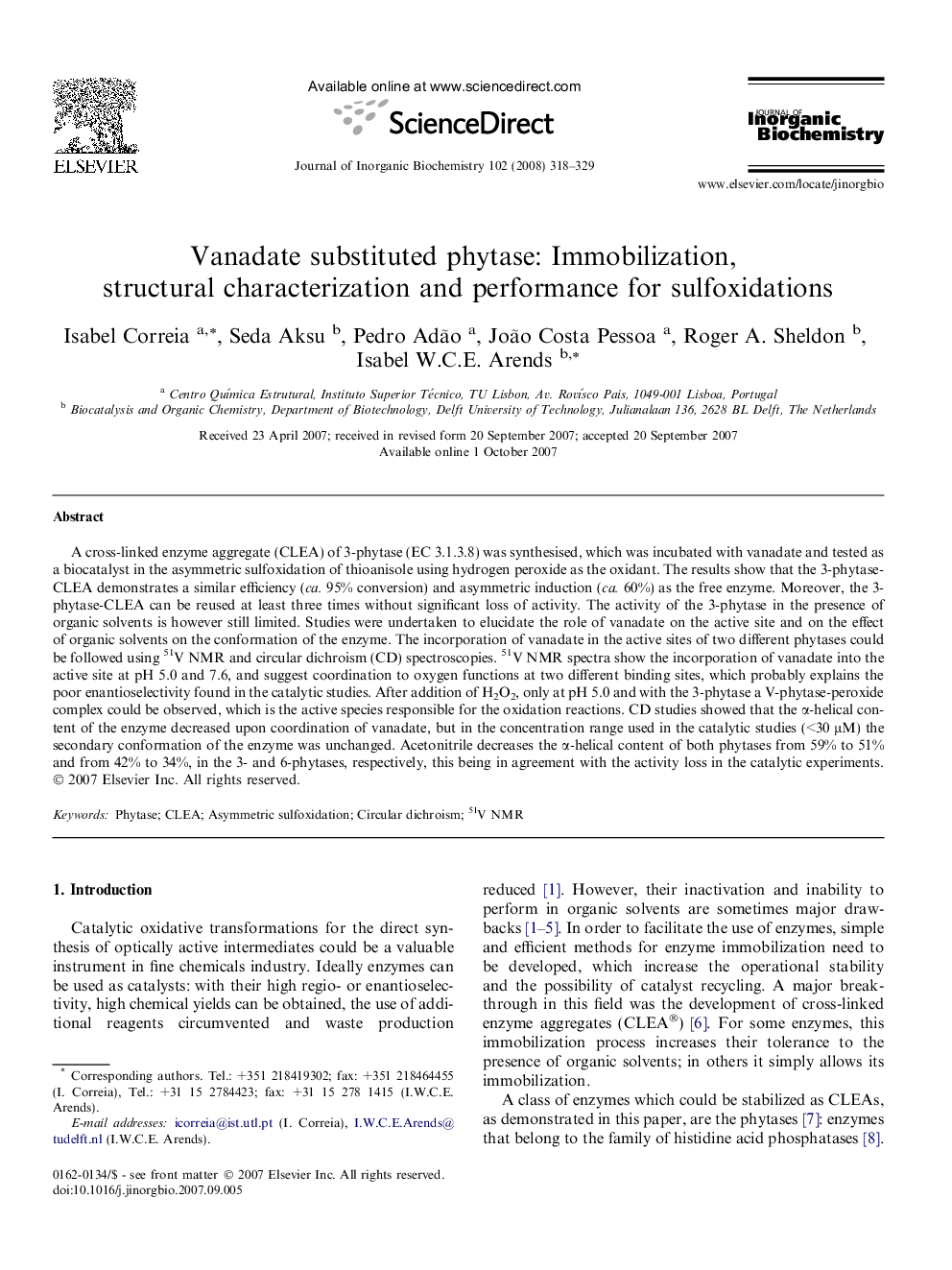| Article ID | Journal | Published Year | Pages | File Type |
|---|---|---|---|---|
| 1318086 | Journal of Inorganic Biochemistry | 2008 | 12 Pages |
A cross-linked enzyme aggregate (CLEA) of 3-phytase (EC 3.1.3.8) was synthesised, which was incubated with vanadate and tested as a biocatalyst in the asymmetric sulfoxidation of thioanisole using hydrogen peroxide as the oxidant. The results show that the 3-phytase-CLEA demonstrates a similar efficiency (ca. 95% conversion) and asymmetric induction (ca. 60%) as the free enzyme. Moreover, the 3-phytase-CLEA can be reused at least three times without significant loss of activity. The activity of the 3-phytase in the presence of organic solvents is however still limited. Studies were undertaken to elucidate the role of vanadate on the active site and on the effect of organic solvents on the conformation of the enzyme. The incorporation of vanadate in the active sites of two different phytases could be followed using 51V NMR and circular dichroism (CD) spectroscopies. 51V NMR spectra show the incorporation of vanadate into the active site at pH 5.0 and 7.6, and suggest coordination to oxygen functions at two different binding sites, which probably explains the poor enantioselectivity found in the catalytic studies. After addition of H2O2, only at pH 5.0 and with the 3-phytase a V-phytase-peroxide complex could be observed, which is the active species responsible for the oxidation reactions. CD studies showed that the α-helical content of the enzyme decreased upon coordination of vanadate, but in the concentration range used in the catalytic studies (<30 μM) the secondary conformation of the enzyme was unchanged. Acetonitrile decreases the α-helical content of both phytases from 59% to 51% and from 42% to 34%, in the 3- and 6-phytases, respectively, this being in agreement with the activity loss in the catalytic experiments.
